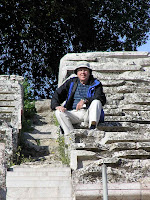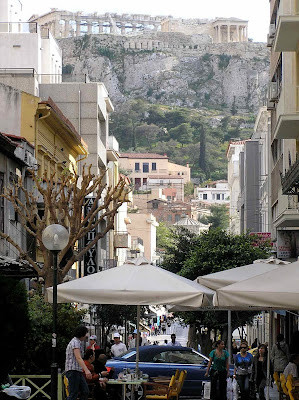
... took place on our last day in Athens as we had the chance to walk around on the Acropolis, see the Parthenon close-up, and revel in the amazing architectural accomplishments from the classical period of Greek history!
The parthenon (from parthenos or "virgin" in Greek) was built between 447-438 B.C. in the Age of Pericles after the Acropolis had been reduced to ruins by the Persians just before the Battle of Salamis in 480 B.C. As is readily apparent in the picture below, the Parthenon is currently being reinforced and reconstructed.

Right beside the Parthenon is the "Temple of the Maidens" which is also rather spectacular.


And, from the lofty vantage point on the Acropolis one looks down on the "Temple of Hephaestus" (the Greek god of the forge), the agora, and "Mars Hill" (the Areopagus - Acts 17:22) where Paul debated with Epicurean and Stoic philosophers.


 By the time we got back to Athens on Day #6, I was fighting a bad cold, so opted to stay at the hotel while Nancy visited the Acropolis Museum and the National Archaeological Museum where she saw the "golden funeral mask" of Agamemnon (which in all likelihood was a mask for someone else!) and a host of spectacular treasures, including the bronze statue of Zeus dating from 460 B.C.
By the time we got back to Athens on Day #6, I was fighting a bad cold, so opted to stay at the hotel while Nancy visited the Acropolis Museum and the National Archaeological Museum where she saw the "golden funeral mask" of Agamemnon (which in all likelihood was a mask for someone else!) and a host of spectacular treasures, including the bronze statue of Zeus dating from 460 B.C. On our final evening, we splurged and took-in another tour "extra," a 6-course dinner in the seacoast suburb of Piraeus with impressive views of the yacht harbor! - rw







































